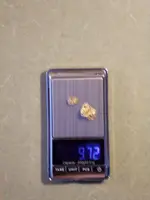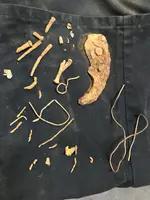bcfromfl
Full Member
- Joined
- Feb 18, 2016
- Messages
- 249
- Reaction score
- 304
- Golden Thread
- 0
- Location
- Youngstown, FL
- Detector(s) used
- GPX 4500,
Fisher Gold Bug Pro,
Gold Hog stream sluice
- Primary Interest:
- All Treasure Hunting
Hi everyone --
A few weeks ago, I purchased a used GPX4500. Because of a few, minor missing parts, I wasn't able to test it out stock before I sent it to Woody for his mods. I also ordered his signal booster/enhancer and compact batteries. I've got the machine back now, and trying to understand how to use it, and all the settings. I've got hundreds of hours under my belt with VLFs, but, as you know, this is COMPLETELY different. To say I'm a bit overwhelmed would be putting it mildly! I've read through the manual a few times, watched the DVD, and copied as much additional info off the web as I can find, including Steve H's instructions.
Anyway, if I could get a bit of input on the depth I'm getting on an air test, that would be helpful in at least letting me know I'm on the right track. With a Jefferson nickel and a Coiltek Elite 18" mono coil, I'm getting 24" with it basically on Deep and Normal. How does that compare with what you all can get with a large coil?
Also, I'm limited right now to testing in my yard as I learn how to use it. I've got nearby power lines giving me fits. In one direction they're about 50 yards away, and the other direction, about 100 yards. I can get it tuned and get repeatable signals, but what I'm wondering is if the electrical interference might actually overwhelm the potential of the circuitry to be as sensitive as it normally could be? I know it makes detecting faint signals challenging just because of the audio problem, but is there also a circuitry issue?
Thanks loads!
A few weeks ago, I purchased a used GPX4500. Because of a few, minor missing parts, I wasn't able to test it out stock before I sent it to Woody for his mods. I also ordered his signal booster/enhancer and compact batteries. I've got the machine back now, and trying to understand how to use it, and all the settings. I've got hundreds of hours under my belt with VLFs, but, as you know, this is COMPLETELY different. To say I'm a bit overwhelmed would be putting it mildly! I've read through the manual a few times, watched the DVD, and copied as much additional info off the web as I can find, including Steve H's instructions.
Anyway, if I could get a bit of input on the depth I'm getting on an air test, that would be helpful in at least letting me know I'm on the right track. With a Jefferson nickel and a Coiltek Elite 18" mono coil, I'm getting 24" with it basically on Deep and Normal. How does that compare with what you all can get with a large coil?
Also, I'm limited right now to testing in my yard as I learn how to use it. I've got nearby power lines giving me fits. In one direction they're about 50 yards away, and the other direction, about 100 yards. I can get it tuned and get repeatable signals, but what I'm wondering is if the electrical interference might actually overwhelm the potential of the circuitry to be as sensitive as it normally could be? I know it makes detecting faint signals challenging just because of the audio problem, but is there also a circuitry issue?
Thanks loads!
Upvote
1





 The 5x10 isn't waterproof and you also can't fold up the SDC with that coil.
The 5x10 isn't waterproof and you also can't fold up the SDC with that coil.
 )
)

